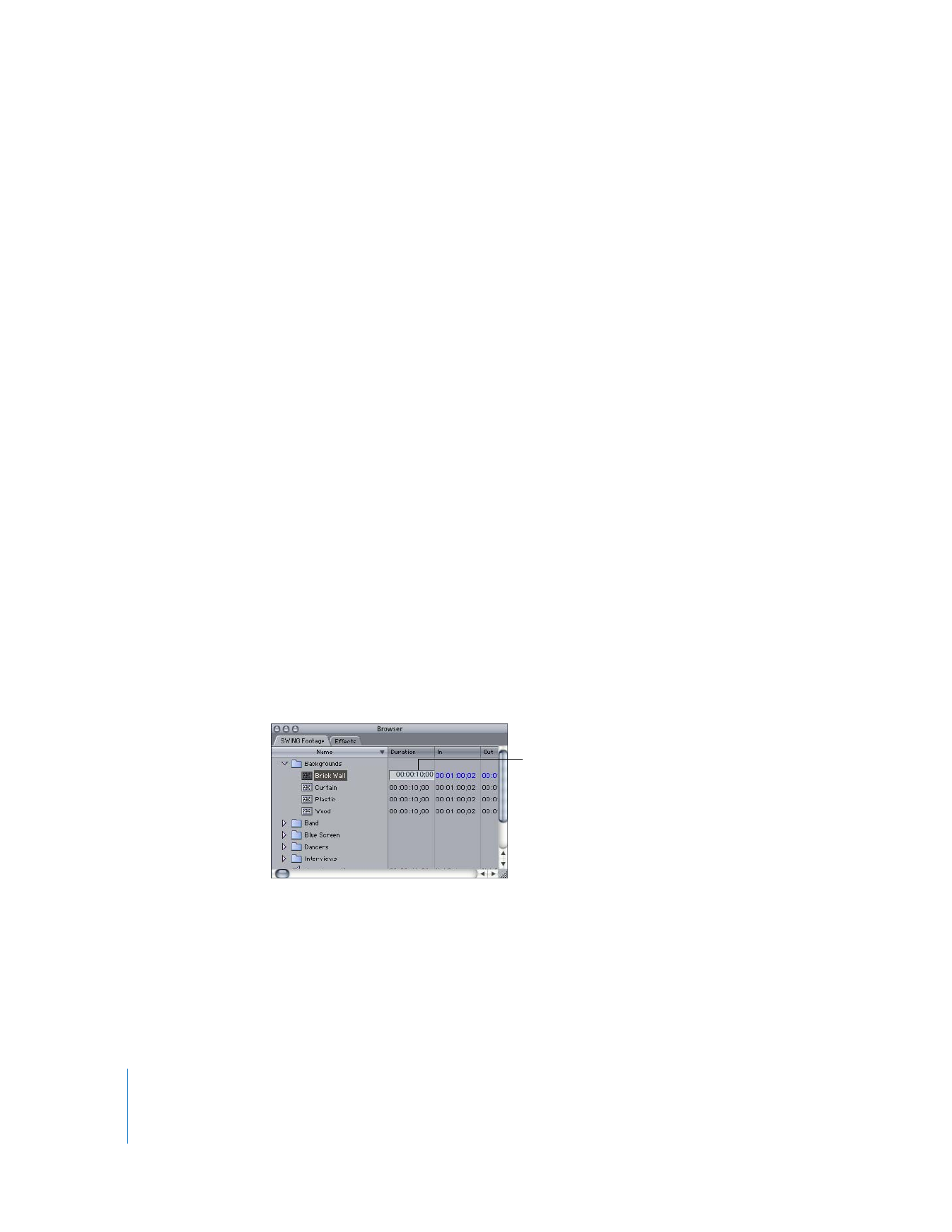
Scaling Images and Video Clips to Match a Sequence
Whenever you edit a still-image clip into a sequence, Final Cut Pro compares and
automatically adjusts the following properties of the image and the sequence:
 Horizontal and vertical dimensions: If the still-image dimensions are larger than the
sequence dimensions, the still image is scaled to fit in both dimensions (without
distorting the image). This means that you always see the entire still image within
the frame of the sequence.
If the graphic has smaller dimensions than the sequence, the graphic is not scaled.
This is because scaling images beyond 100 percent reduces the quality (pixels would
be magnified, which would create blocky artifacts in the image). Final Cut Pro avoids
automatically scaling clips beyond 100 percent.
 Pixel aspect ratio: If the still-image pixel aspect ratio is different from the sequence
pixel aspect ratio, Final Cut Pro adjusts the still-image clip’s Aspect Ratio parameter
(located in the Distort attribute of the clip’s Motion tab). This compensates for
nonmatching pixel aspect ratios between the still image and the sequence. The
result is that the clip does not appear distorted simply because it has a different pixel
aspect ratio. Without this automatic compensation, you would have to manually
calculate how much to compensate for nonmatching pixel aspect ratios. For more
information, see “
Controls in the Motion Tab
” on page 258.
If the frame size of your graphic doesn’t match the frame size of your edited sequence
and you want to correct this, you can do so easily.
To scale an image within a sequence to exactly fit the sequence dimensions:
1
Select one or more clips in the sequence.
∏
Tip: You can also place the playhead over a clip in the Timeline without selecting
any clips.
2
Choose Modify > Scale to Sequence.
Each selected clip’s Scale parameter is set to the appropriate amount so that both
horizontal and vertical image dimensions fit within the sequence dimensions. The
images are not squeezed or stretched, but they may appear letterboxed or pillarboxed
if the aspect ratios of the image and the sequence don’t match.
Note: The Scale to Sequence command works on video clips as well as still-image clips.
If you want to zoom in to and out of an image, such as a scanned map or photograph,
you should use an image with higher resolution than the sequence. The more high
resolution the image is, the less likely it is that you will need to scale more than
100 percent to show details. Scaling video and still images more than 100 percent
creates artifacts: individual pixels become noticeable, causing a “stair-stepping” artifact
on high-contrast diagonal lines.

378
Part II
Effects
Note: You can add the illusion of camera motion to still images, as is often done in
documentaries, by subtly keyframing the Scale setting (for zooming) as well as movement
of the image within the frame (Center, Anchor Point, and Rotation parameters). See
“
Example: Adding Camera Motion to Still Images
” on page 379 for details.
To scale an imported graphic in a sequence:
1
Edit the image into the sequence in the Timeline.
2
Double-click the clip in the Timeline to open it in the Viewer.
3
Click the Motion tab in the Viewer.
4
Edit the percentage value in the Scale field, or adjust the Scale slider until you find a
size you like.